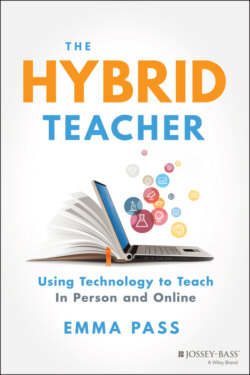Читать книгу The Hybrid Teacher - Emma Pass - Страница 12
Chapter 1 Synchronous and Asynchronous Learning
ОглавлениеI never teach my pupils; I only attempt to provide the conditions in which they can learn.
—Albert Einstein
When we talk about teaching and learning, especially in the context of a digital learning environment, we are typically thinking about it in one of two ways:
| Synchronous Learning Teaching and learning occur together, simultaneously. This can happen in-person or online. | |
| Asynchronous Learning Students access learning at different times and work through it at their own pace. |
Synchronous learning is what typically happens in a traditional brick-and-mortar school; it's what we think of when we hear “teaching.” The teacher stands in front of the class and delivers instruction, and the students receive the information simultaneously. Then students practice and apply their learning within the time constraints of the class period.
However, it's important to note that synchronous learning can also be conducted remotely over a video conferencing platform like Zoom or Google Meet in a remote or hybrid learning scenario.
In contrast, asynchronous learning is typically prebuilt and posted for students on a learning management system (LMS) to access within the time constraints of a day, week, or unit.
Many 100% online schools are entirely asynchronous, where students have access to the entirety of their prebuilt course work, unit, or module, and they work through it at their own pace.
Hybrid schools often use a combination of both. Our PSD Global Academy (PGA) middle school schedule, for example, follows this system for delivering instruction:
| Monday | Tuesday | Wednesday | Thursday | Friday |
| Remote Asynchronous | On-Campus Synchronous | Remote or On-Campus Asynchronous | On-Campus Synchronous | Remote Asynchronous |
However, there are other methods for delivering synchronous/asynchronous instruction that you can read about in The Administrators' Appendix. These examples are found in schools that are attempting to teach synchronously to students who are both in the classroom and at home by livestreaming their lessons (concurrent instruction).
I believe there are benefits to both synchronous and asynchronous instruction, and both should be adopted as instruction methods regardless of whether you're full-time brick and mortar, hybrid, or remote.
